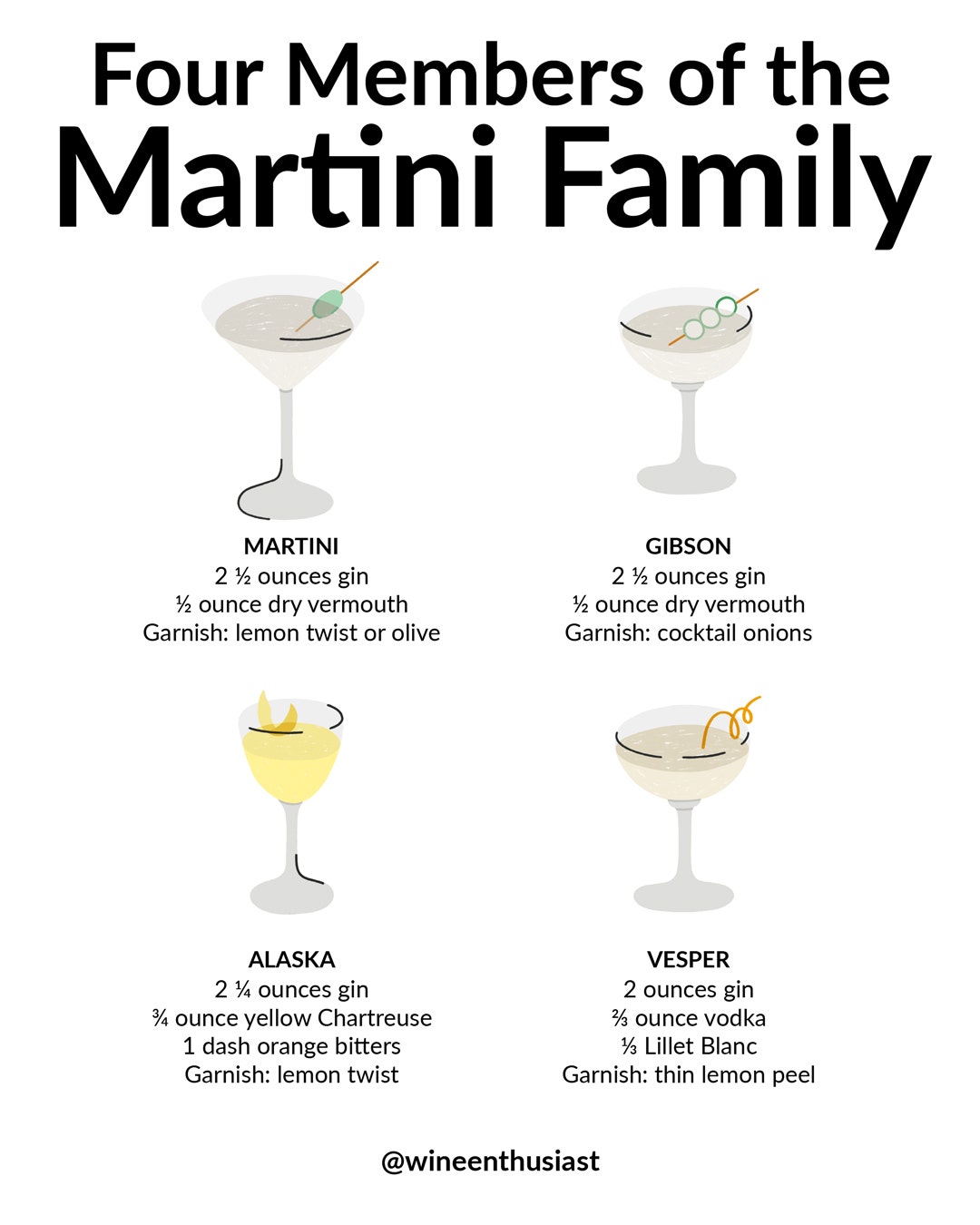“Never count the martini out,” writes Robert Simonson in The Martini Cocktail: A Meditation on the World’s Greatest Drink.
An enduring icon, the martini has cultural cachet and versatility. For decades, martini drinkers have specified whether they prefer theirs wet (vermouth-forward), dry (little to no vermouth) or dirty (with olive brine), much as they would order a steak medium-rare or coffee black.
The drink’s basic recipe also provides a rubric from which generations of bartenders have created new cocktails. If you play around with the ratio of gin to vermouth, swap in different spirits, or add other ingredients alongside or instead of vermouth, you can transform a martini into an entirely new, yet undeniably related drink.
Here are four of our favorite cocktails in the martini family tree.
Martini
At its most basic, a martini is at least two parts gin to one part dry vermouth with a garnish of olives or lemon peel. The gin gives the drink alcohol and heft, while vermouth and garnish provide complementary aromas and flavors.
Gibson
This is a classic martini with a cocktail onion as garnish. In The Martini Cocktail, Simonson recommends making your own cocktail onions at home, writing, “a batch will take you 20 minutes and yield months of pleasure.”
Alaska
Yellow Chartreuse swaps in for vermouth in this cocktail that most historians date to the 1910s. It also includes a dash of orange bitters, which were common in many 19th- and early 20th-century martinis.
Vesper
Credited to Ian Fleming’s 1953 Casino Royale, the recipe for the vesper martini features gin and vodka, plus a splash of Lillet Blanc or Cocchi Americano to approximate the original’s now-discontinued Kina Lillet.

Last Updated: May 8, 2023















